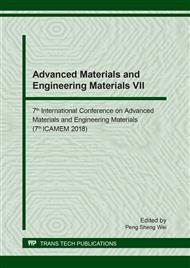p.300
p.306
p.311
p.316
p.322
p.327
p.333
p.339
p.344
Characteristics of SAC305 Lead-Free Powder Prepared by Centrifugal Atomization
Abstract:
Centrifugal atomization apparatus was constructed to produce solder alloy powder with high quality. In this work, SAC305 alloy was atomized to study the effects of processing parameters, including atomizer disk surface condition and oxygen content in the atomizer chamber on the mean particle size, size distribution, production yield, and morphology of the produced SAC305 powder. The results showed that the atomizer disk surface coated with tin alloy gave the produced powder with smaller mean size, narrower size distribution and higher production yield, in comparison with the uncoated disk. This is due to a good wettability between the molten SAC305 and atomizer disk surface and the sufficient time for alloy droplets to be solidified. The shapes of SAC305 powder were sphere, teardrop, oval, and ligament, depending on the oxygen content in the atomizer chamber during atomization. The shape of produced powder was almost perfectly spherical when the oxygen content was decreased down to 0.5 vol.%. Moreover, with decreasing the oxygen content in the atomizer chamber, the produced SAC305 powder would contain oxygen content on its surface lower than 100 ppm.
Info:
Periodical:
Pages:
322-326
Citation:
Online since:
August 2018
Authors:
Keywords:
Price:
Сopyright:
© 2018 Trans Tech Publications Ltd. All Rights Reserved
Share:
Citation:


